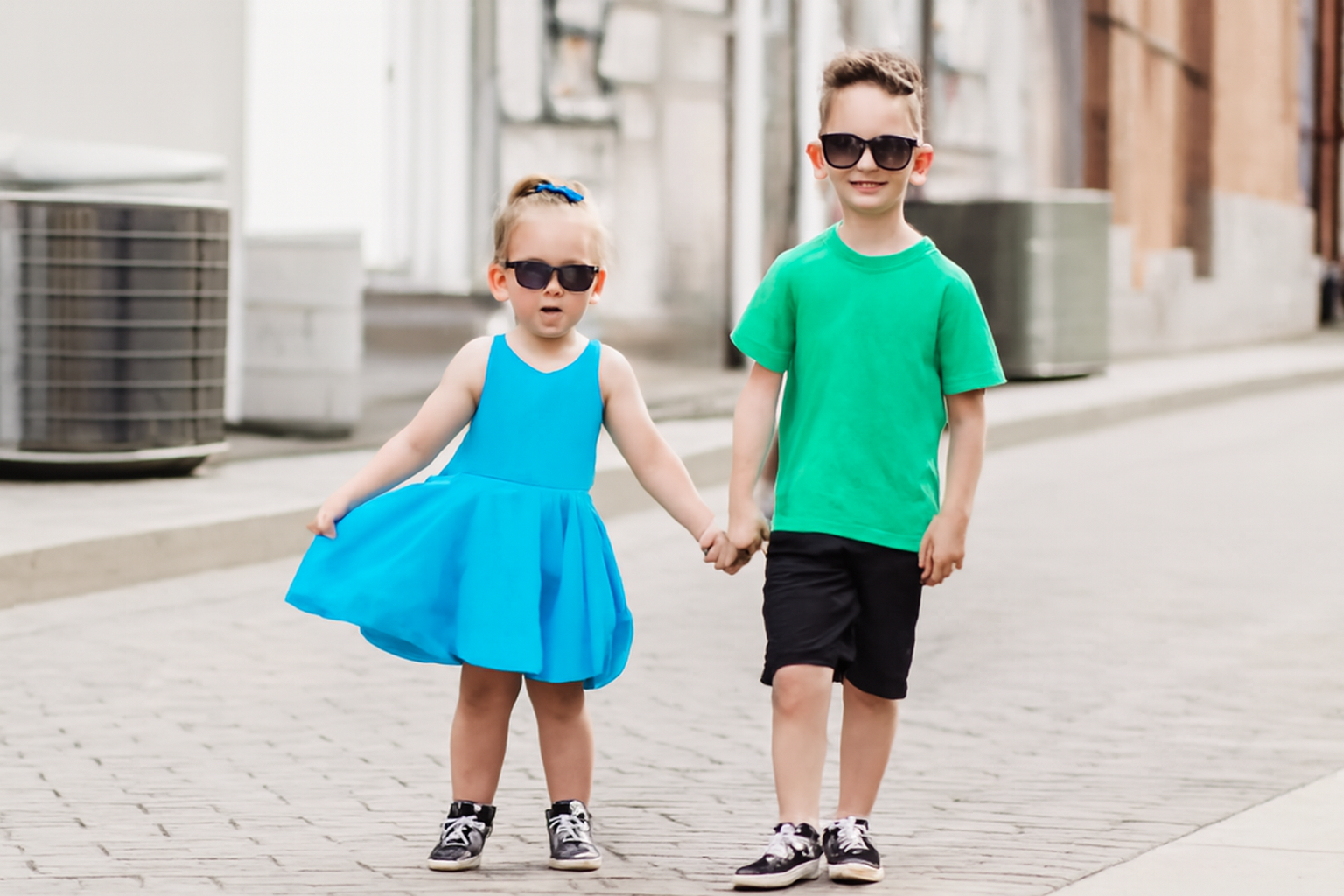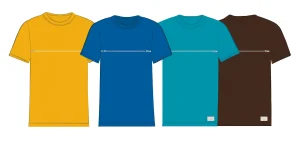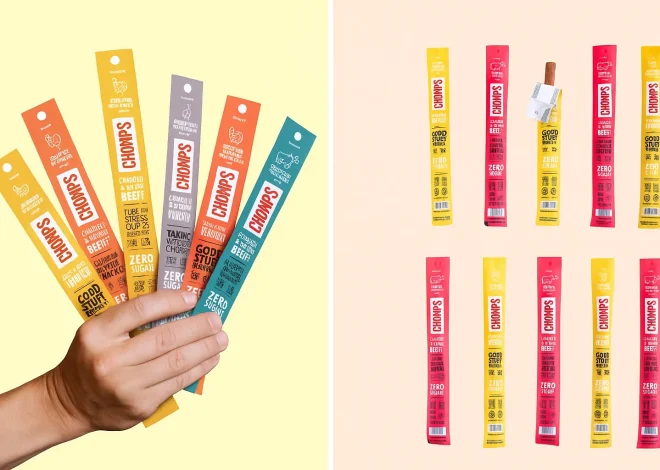
Sensory-Friendly Clothing Comfy Options for Adults
Understanding Sensory-Friendly Clothing
Rather than having itchy physical tags, the clothes use printed-on or tagless labels. They apply seamless flattened seams or place seams on the outside, so nothing rubs or scratches the skin providing pure comfort in every layer, including the hoodie. This type of sensory friendly clothing is also easy to wear, thanks to stretchy waistbands, which are especially helpful for those with sensory issues. The sensory friendly clothing meaning generally comes down to comfort and ease, helping a person feel secure and relaxed in whatever they choose to wear.
What is Sensory-friendly Clothing?
As someone with a family member who gets irritated by tags, seams, or clothing that clings, I’ve seen how much peace sensory friendly clothing, like super soft fabrics, brings. These aren’t just soft clothes they remove those annoying physical tags and use printed-on tags instead. No more scratching or discomfort, just calm. For more simple comfort solutions like this, check out BestVouch.

Benefits of Wearing Sensory Clothing
Having sensitive skin affects my daily clothes selection, particularly when considering sensory processing disorders and the need for super soft materials. I prefer to find a fabric that is soft, with no tags and an unseamed finish, especially in my hoodies. These small details make a huge impact, especially for those who benefit from sensory friendly clothing, including individuals with autism, ADHD, or chronic body conditions where even a tight stitch can feel intolerable.
Who does sensory-friendly Clothing Benefit?
Sensory-friendly clothes vary with the time of the year, like all normal clothes, but they are essential for autistic children with sensory processing disorder (SPD). During low temperature seasons, clothing companies such as Uniqlo and Eileen Fisher add layers of clothing with breathable materials. In warmer months, sensory friendly clothing includes lighter fabrics and looser fits that look and feel gentle on the skin, reducing irritation and making daily wear more comfortable.
I’ve found that collections from Betabrand often include thoughtful details, like smooth seams and tagless labels. These touches make a real difference in daily comfort. Many of their pieces fall under sensory friendly clothing, offering comfort that works for anyone. Today’s seasonal trends mix function and style so well that even people without sensitivities enjoy these pieces.
Key Features of sensory-friendly Clothing
-
Soft fabrics like bamboo and Modal are gentle and don’t itch.
-
These clothes are smooth, light, and comfortable all day.
-
Good brands avoid scratchy tags and use printed labels instead.
-
This helps kids who don’t like tags on their back.
-
Clothes often have stretchy waistbands and flat or outside seams.
-
They give more comfort and let kids move freely.
-
Some kids like gentle pressure from certain clothes to feel calm.
-
Others need breathable fabric so they don’t get too hot.
-
Everything is made to help kids feel better and stay focused.
Smooth Design to the Highest Comfort
I never find clothing that irritates my sense, yet it itches most of the time. Clothing with no seams or flattened seams is one of the things that are helpful for those experiencing sensory-sensitive reactions. This is where sensory friendly clothing makes a real difference. Companies such as Hanes and Under Armour have mastered this by using outward seams or seam-free models, providing pure comfort for all wearers. The information matters a lot when considerations point towards having a soft and gentle feeling throughout the day.
What I also love are bump-free socks from Bombas, which stay smooth with no itchy lines, making them perfect for sensory-sensitive kids with sensory processing disorder. Shopping at Target or Walmart, I’ve found tagless clothes with thoughtful touches like hidden stitching and no scratchy tags. These options are not only soft but also great examples of sensory friendly clothing, making dressing easier for those with sensory needs, especially for kids with SPD.
The Need of Cotton and Organic Cotton Soft Fabrics
My personal experience in guiding families in deciding what clothes choices are sensory-friendly suggests that the touch of the material takes precedence. This can make a tremendous difference, especially when choosing sensory friendly clothing made from soft fabrics such as cotton, Modal, and bamboo-based materials. These fabrics aren’t itchy and don’t irritate the skin when rubbed the wrong way, which helps improve both comfort and concentration especially for neurodivergent individuals dealing with sensory issues.
Such brands like Eileen Fisher, Uniqlo, Yoga Jeans, and Universal Standard do not forget this. They use scuba-like breathable textures in their designs that stay soft throughout the day, making them ideal for fidgeting and reducing anxiety. Most of their products are made using cotton and organic varieties, which is often the main reason why people are drawn to them especially those looking for sensory friendly clothing for women.
Weights and compressions of southern trees and woods.
It also can be beneficial to consider what compression and weight feel like on your body when selecting sensory friendly clothing. Some people feel more at ease when their outfit applies a slight amount of pressure. Items like underpants, socks, and light-supporting bras can offer relaxation without feeling tight just like my favorite hoodie.
Such brands as Hanes, Fruit of the Loom, and Liberare create soft clothes that do not harm the skin, making them ideal for neurodivergent people. These sensory friendly clothing options are not difficult to find in stores like Walmart and Target, where adaptive apparel is becoming more available. In my personal experience, switching completely to tag-free unders and smooth, seamless bras made from pure materials has greatly improved the comfort of living pain-free.
The correct weight of a material counts as well. Not all things that are compressed are better, because it also depends on how your body responds to heavier compression especially for sensory-sensitive kids. Comfortable socks or a soft bra with the slightest pressure could support your body in feeling more grounded. This is where sensory friendly clothing plays an important role, offering comfort without overwhelming pressure, especially when textures around you are typically bothersome.
Types of Common Sensory-Friendly Clothing
Sensory-friendly clothing is appropriate when a person has clothes that are rough or tight. I have witnessed the transformation that happens when the everyday rush of dressing shifts to soft materials or loosely fitted, unzipped, or unbuttoned clothes. These small changes can make a big difference, especially in emotional regulation. I also once swapped all my shirts for seamless ones and immediately felt better no more itching, no tags, just comfort. Wearing sensory friendly clothing as an adult has its hidden advantages, often not fully understood until personally experienced. It quietly supports comfort and emotional balance in daily life.

Most individuals prefer to put on leggings, slacks, or jeans made of soft, stretchy material, which is often available in adult sizes. These pieces of sensory friendly clothing avoid rigid seams and coarse fabrics, which can increase anxiety for those with sensory sensitivities. Others prefer t-shirts that gently touch the skin and undergarments with smoother lining. Tags and rough elastic bands have also been eliminated in many bras, underwear, and pants, making a tremendous difference for those allergic to tags and tight bandses pecially individuals with sensory processing disorders.
Comfy sensory-friendly Shirts
Finding sensory-friendly clothing women and sensory-friendly men’s clothing that actually feels good all day is something I understand well, especially when considering high-quality options like soft bamboo materials. I once wore a regular tee that had a rough seam and a printed tag it bothered me all day. Since then, I stick to tagless, seamless options with soft fabric that don’t rub or scratch, which are perfect for fidgeting. It really helps when brands like Universal Standard, Hanes, and Target offer pieces that focus on comfort, simple design, and truly sensory friendly clothing that supports everyday wear without irritation.
I personally like t-shirts that are both smooth and light, especially the ones from Bombas or Target, and I love their hoodies as well. These shirts often come without annoying tags or inside seams. I’ve noticed many neurodivergent people with texture sensitivity feel better wearing printed tags instead of stitched ones, as it helps minimize sensory overload and decrease anxiety. You really can feel the difference when the fabric is super soft and thoughtfully made, which is why sensory friendly clothing is becoming a go-to choice for many looking for comfort without irritation.
Loose-Fitting Sensory-Friendly Pants
Being a person that has understood the various opportunities in terms of sensory friendly clothing among adults, it’s little things like a soft hoodie that count the most. Pants also get uncomfortable when they are too tight or when they turn rough. That is why I prefer a loose fit, soft fabric, and stretch waistbands that don’t press on the skin, along with a cozy hoodie for added comfort. These choices in sensory friendly clothing keep me cool and calm during the day, allowing for better emotional regulation especially when I wear my favorite hoodie.
With such brands, adults no longer think it is impossible to find sensory friendly clothing for children with sensory processing disorder, which can help decrease anxiety and make them happier. I am happy to make my decision consciously when wearing pants to work or relaxed weekends and be confident of comfort.
Specialized sensory-friendly Underwear
I’ve tried many sensory friendly clothing brands for adults, and finding comfortable undergarments can be the hardest part, especially when I want a matching hoodie. Good sensory-friendly underwear should feel like it’s barely there. I personally rely on tag-free and seamless styles, especially when my skin feels sensitive or irritated, as they help me feel happier throughout the day.
Brands like Fruit of the Loom, Hanes, and Bombas make great high-quality soft fabric options, including knit styles, that don’t itch or rub. Their stretchy materials give just enough compression to feel secure but not tight. For those looking for sensory friendly clothing, I also found Liberare makes easy-to-wear bras that skip annoying hooks and rough seams, making them suitable for women with SPD.
Selecting the Appropriate Fit and Size
I am an expert who has had years of experience supporting families in finding the most suitable sensory friendly clothing, and I understand how challenging it can be to decide on the right size. What truly matters is how the clothing feels against the skin, not the style. Most of the parents I work with often prefer brands like Universal Standard and Primary because they offer sensory friendly clothing that is soft, stretchy, and gentle garments that don’t irritate or restrict movement.

There is an appropriate fit, especially with kids who have sensitivities, and when there is a snug or slim fit that feels just right, it contributes to their overall comfort and regulation. I always recommend testing clothes with soft-feel tags or even better, tagless options to ensure comfort for those with sensory processing issues. The trick here is to put comfort above all else. It’s not just about how the clothes look, but how they feel during movement. Choosing sensory friendly clothing makes a big difference, offering gentle materials and thoughtful design for kids who need extra comfort.
Understanding Size Charts
When buying sensory friendly clothing for adults, the fit matters as much as the fabric. I’ve often seen that confusing size charts make shopping harder for teens, especially those with sensory needs. From XS to XXL, brands such as Target, Walmart, and Hanes use one system, while others like Universal Standard go with 2XS to 6XL. Such arbitrary sizing can make it difficult to choose the right fit when looking for sensory friendly clothing that offers both comfort and consistency.
Personally, due to trial and error, I will never shop at a brand without first double-checking to see that it offers a full size range, like XXS to 3X or more, especially for teens. Others include only XS to XXL, and some labels go from 2XS to 6XL, which affects how the clothing fits especially for kids with sensory issues who may need discreet styles. Sensory friendly clothing often feels most comfortable when the sizing is just right. That’s why I always rely on the brand’s official size chart and avoid guessing. It simplifies choosing what to wear, especially with comfortable options from Walmart, Hanes, and Target, where ease matters most.
Why it is tough to find a perfect Waistband Fit?
Being a person who spends most of my days dressed in environmentally sensitive items and having to overcome the challenge of finding pants that are not itchy, pinching, or too tight, I can tell those with sensory sensitivity how much of a pain it is. Stretchy waistbands or elastic waistbands are something that I prefer to wear anytime, even on loose-fitting slacks or lounge pants. They give the freedom of body movement and can feel nice during the entire day, as the styles themselves are not uneven like stiff materials. That’s why I always look for sensory friendly clothing, which focuses on comfort, softness, and flexibility without irritating seams or tight fits.
Bypassing buttons and zippers is one of the ways to find the right pair of shoes made from soft bamboo materials. It is my personal choice not to use zipper-waists since they are smoother and not irritable. Companies such as Betabrand, Target, and Yoga Jeans have designs that appear polished, yet feel like pajamas. These are great examples of sensory friendly clothing, offering comfort without the usual triggers. When you find the ideal waistband adjustment, getting dressed becomes a breeze and calm in the morning, especially with discreet designs that help reduce anxiety.
Considerations for Different Body Types
Finding sensory-friendly clothing for adults isn’t always easy, especially when it comes to fitting different body types. I’ve tried dozens of options over the years and noticed that brands like Universal Standard and Eileen Fisher really think about fit and comfort. Their sensory friendly clothing designs feel super soft on the skin and avoid tight seams, making everyday wear more relaxing for individuals with sensory sensitivities.
If you’re searching for sensory-friendly women’s clothing, go for adaptive styles that move with your body, such as soft bamboo hoodies. Brands such as Betabrand often offer stretchy, casual pieces that adjust well across sizes and still look stylish. These clothes give you breathing room while making sure you don’t feel restricted, which is essential for avoiding sensory overload.
The most useful advice I give clients is to find inclusive labels that respect all shapes, especially for children with sensory processing disorder. These brands don’t just scale one size up or down; they design with every body in mind, including those needing sensory-sensitive options. This is what makes sensory-friendly clothing for women, including hoodies and shorts, easy to wear every day.
Visiting Sensory-Friendly Clothing Small Stores
I used to have problems with clothing (my clothes used to itch, or pull on the skin). I tested various brands of sensory-friendly clothing. Soft materials and harmonious design gave me a feeling of relief, especially when dealing with sensory overload. Nowadays, a big number of brands produce special lines of clothes, including adaptive clothing designed for sensory-sensitive individuals. By creating these designs, people find their everyday wear difficult to bear, which can increase anxiety for some individuals. These bundles support the feelings of comfort for both kids and adults, making them ideal for neurodivergent people.

The best brands that offer sensory-friendly clothes to adults include Liberare, Yoga Jeans, Eileen Fisher, and Betabrand, catering to neurodivergent people with sensory issues and providing discreet options. The product lineup of stores such as Target, Walmart, and Uniqlo are also skewed towards making the customer comfortable. Anything by Hanes or even Bombas feels like gentle fabric with smooth integrations, perfect for autistic individuals. Even the less established names such as Sam, Sensory & More are doing a fantastic job in the area.
Overview of Available Collections
When I searched for sensory-friendly clothing for my nephew who has autism, I noticed that comfort and choice really matter. Brands like Hanes, Fruit of the Loom, and Uniqlo stood out in their product range, particularly for their adaptive clothing options. Their items use tag-free labels and soft fabrics, which make daily wear more comfortable for tactile kids with sensitivities.
The lineup at Walmart includes easy-to-wear basics with flat seams and relaxed fits. I found Under Armour also offers a smart product range, especially for active kids who need support without discomfort. These collections show that everyday clothes can meet special sensory needs. They do this without losing style or practicality.
Brands Specializing in Sensory Clothing
There was a time when I could not find sensory-friendly clothes that did not appear like medical clothing, but now I can find stylish hoodies. Then I found out Uniqlo, Hanes and Fruit of the Loom basics. Their low-seam and tagless styles actually worked. If people are curious, the answer is yes, there are numerous brands on which sensory-friendly clothes specialise.
The following are examples of fantastic high-quality sensory-friendly adult clothes, including options made from soft bamboo for neurodivergent individuals. Yoga Jeans, Eileen Fisher, and Universal Standard are among the fashionable brands catering to sensory-sensitive kids. All of them have soft materials and clean feel. I also wore the Bombas socks made from soft bamboo and felt relief immediately due to itchy materials, which can be a problem for those with sensory issues. And such brands like Target, Walmart, and Primary have their own lines now, which proves how widespread this necessity is.
In case of specialised requirements, Sam, Sensory & More and Liberare provide clothes that have reduced stitches with extensions for increasing openings. In case you want a more casual appearance, Betabrand comes up with a relaxed style and a lot of stretchability yet not clingy or annoying material, making it ideal for sensory-sensitive individuals. Such brands have altered my shopping habits; I no longer pay much attention to the appearance of the cloth rather than the feel of how it feels.
Seasonal Trends in Sensory-Friendly Apparel
Sensory-friendly clothing adapts with the seasons, much like regular fashion. In colder months, brands such as Uniqlo and Eileen Fisher offer soft, layered styles made from breathable fabrics. In warm weather, loose clothes and light fabrics help you stay comfortable and less irritated.
Betabrand often adds nice touches, such as smooth seams and tagless labels. These features really improve daily comfort, particularly when a hoodie is involved. Today’s seasonal trends blend function and style so well that even those without sensitivities love these pieces.
FAQs
What are sensory-friendly fabrics?
Sensory-friendly fabrics are soft, smooth, and gentle. They help reduce discomfort for sensitive skin, which is essential for individuals with sensory issues.
What is clothing sensory?
Clothing sensory means how clothes feel on your body and how they can be thoughtfully designed to enhance comfort. It looks at textures, seams, and fit, which can impact comfort and regulation for those who are sensitive.


